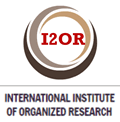Pneumonia and artificial mechanical ventilation in the Intensive Care Unit. A three-year study
Keywords:
pneumonia, ventilator-associated, acinetobacter infections/etiologyAbstract
This study was conducted in order to study the behavior of patients receiving mechanical artificial ventilation and who were diagnosed with pneumonia at the Intensive Care Unit-2 of the Arnaldo Milian Castro Provincial University Hospital in Villa Clara. A retrospective study of the book of infections was conducted for all patients admitted to the service that required mechanical artificial ventilation and who were diagnosed with pneumonia. In each year studied, the living cases and the deceased were separate according to sex, types of germs and those in who two or three germs were isolated, and the air way used. A total of 308 patients were included. There was an increase in each year: 82 in 2008, 95 in 2009 and 131 in 2010. There was a slight predominance of women (155 per 153). However, mortality was lower the year that most cases were treated (53.7% in 2008, 54.7% in 2009 and 49.6% in 2010). Patients had a quite similar distribution in the different months of the year. The Acinetobacter was the germ most isolated each year (24 in 2008, 62 in 2009 and 75 in 2010). Its prevalence increased in the last two years. The number of patients with two isolates increased in 2010 to 44 patients, and eight patients had three germs in 2008, 19 in 2009 and 16 in 2010. The most common air way was the endotracheal tube with 280 and 118 tracheostomies. Pneumonia associated with artificial mechanical ventilation is an important health problem that is increasing. The germ presenting most isolates in our environment is the Acinetobacter, although many germs are increasingly found in the same patient, which increases the costs and makes it difficult the treatment.Downloads
Downloads
How to Cite
Issue
Section
License
Authors who have publications with this journal agree to the following terms:
- Authors will retain their copyright and assign to the journal the right of first publication of their work, which will simultaneously be subject to a Creative Commons License / Attribution-Noncommercial 4.0 International (CC BY-NC 4.0) that allows third parties to share the work as long as its author and first publication in this journal are indicated.
- Authors may adopt other non-exclusive license agreements for distribution of the published version of the work (e.g., depositing it in an institutional repository or publishing it in a monographic volume) as long as the initial publication in this journal is indicated.
- Authors are allowed and encouraged to disseminate their work through the Internet (e.g., in institutional telematic archives or on their web page) before and during the submission process, which can produce interesting exchanges and increase citations of the published work. (See The effect of open access).





 december 15 2025
december 15 2025


